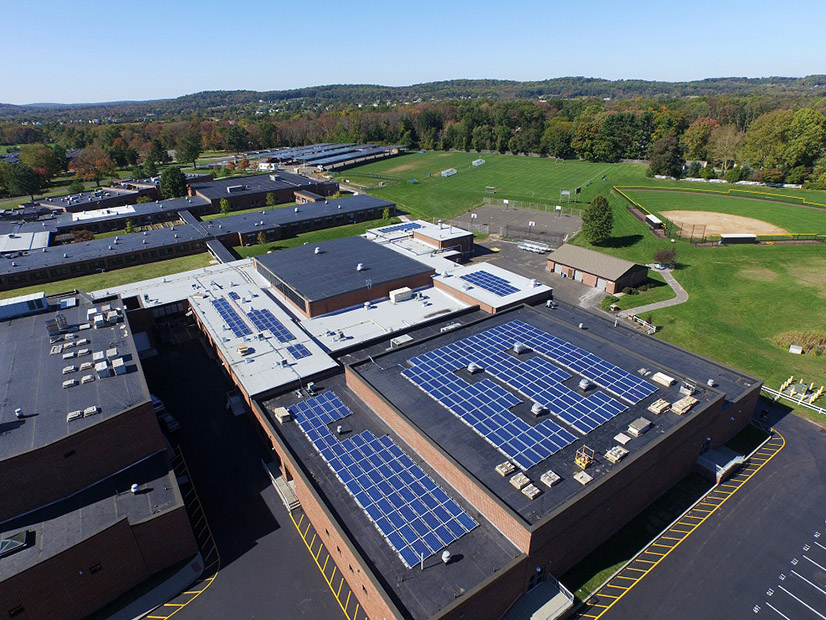
Rapidly growing solar and offshore wind generation will require a modernization of New Jersey’s distribution interconnection process, the Board of Public Utilities (BPU) said Tuesday as it held the first hearing in a seven-month study of how best to prepare for the extra stress.
The agency said it plans to conclude the study in May with recommendations. The topics to be studied will include an assessment and modernization of the processing of interconnection requests, identifying the challenges with the current connection system and looking for ways to improve coordination with PJM, said Guidehouse, a global energy consultant hired to lead the project.
The BPU’s hearing notice said the scope will include “the current distribution grid interconnection policies and process, and potential improvements that will enable faster grid modernization and higher levels of distributed energy resource (DER) absorption.”
New Jersey law sets different review procedures for electric distribution companies: Level 1 for inverter-based customer generation of 10 kW or less; Level 2 for customer generation of 2 MW or less, and Level 3 for customer generation that doesn’t qualify for Level 1 or 2.
The second hearing, on Nov. 16, will be devoted to testimony from environmentalists, energy developers, trade groups and other stakeholders on potential improvements. The BPU expects to have a draft report prepared for public review on March 1.
The initiative stems from the state’s Energy Master Plan, and Gov. Phil Murphy’s commitment to set the state on a path for 100% clean energy by 2050, said Jim Ferris, the BPU’s bureau chief for new technology.
“To enable clean energy to be generated at an accelerated pace, and as effectively and efficiently as possible, New Jersey’s interconnection rules and processes require updating,” Ferris said as he opened the hearing. Modernization strategies outlined in the masterplan include “requiring utilities to establish integrated distribution plans and the modernization of interconnection standards,” he said.
Clean Energy Growth
The 290-page master plan describes grid modernization as the “backbone on which all other efforts to transition to a clean energy economy will rely.” The plan sets a goal of 32 GW of solar generated electricity, 11 GW of offshore wind and 9 GW of storage by 2050.
The state currently has about 3.65 GW of solar energy generating capacity, and the BPU has awarded offshore wind contracts totaling 3.758 GW, including 2.658 GW awarded in June. (See NJ Awards Two Offshore Wind Projects.) The BPU expects to make three more rounds of offshore wind awards by 2033 for a total of 7.5 GW.
Industry stakeholders, among them developers and environmentalists, welcomed the BPU’s initiative in seeking stakeholder input into the modernization process.
Under the current process, a customer proposes a clean energy project and submits an interconnection application and agreement to tie the resulting project into the grid. The electric distribution company (EDC) then identifies and installs network upgrades, if needed, and the customer receives approval to install the project. After a final inspection, the developer seeks approval to operate.
Eric Miller, energy policy director in New Jersey for the Natural Resource Defense Council, encouraged the BPU to look beyond the interconnection process and consider a broader array of issues. Factors such as the charging load from electric vehicles and building electrification, energy storage, demand response, and peak load reduction should all be considered in the modernization discussion, he said, adding that “it touches on everything that’s grid connected or could interact with the grid.”
Steven S. Goldenberg, representing the New Jersey Large Energy Users Coalition, said one difficulty for solar developers is that while the BPU initiates a two-year timeline from the start of a project to approval, PJM operates on a timeline as long as three years. “So, the disconnect can be critical for certain project developers.”
Questions over Resources, Timelines
Fred DeSanti, executive director of the New Jersey Solar Energy Coalition, said a key concern of his members is what they see as the lack of resources at EDCs to handle the growing number of solar connections that need to be made, which results in significant project delays.
“It’s a huge problem because of the number of applications,” he said. While the EDCs are responsible for interconnections, the resulting increase in solar energy could reduce demand for the EDC’s power, he said.
“What we’re asking them to do is to hire more people and to put resources in so that they can get less revenues,” he said. “It’s an irrational process.”
DeSanti said his organization would also like the hearings to focus on “cost sharing,” with an aim of creating a set of standardized per-KW fees paid by developers, with the understanding that costs not covered by that would be borne by ratepayers.
Scott Elias, senior manager of Mid-Atlantic state affairs for the Solar Energy Industries Association, said that as the number of projects arriving at the EDCs grows — especially larger and more complex developments — there is a need for the utilities to “pre-screen” them to assess the interconnection costs in advance.
“We’ve seen this play out in other states where this helps reduce the number of speculative applications and it also helps prioritize projects,” he said. He also suggested that the state set up a uniform set of interconnection fees for solar projects based on market segment type and size.
“What we need is to provide certainty to developers of big systems, that their interconnection costs will be manageable and give them the security they need to move forward with their projects,” he said.

